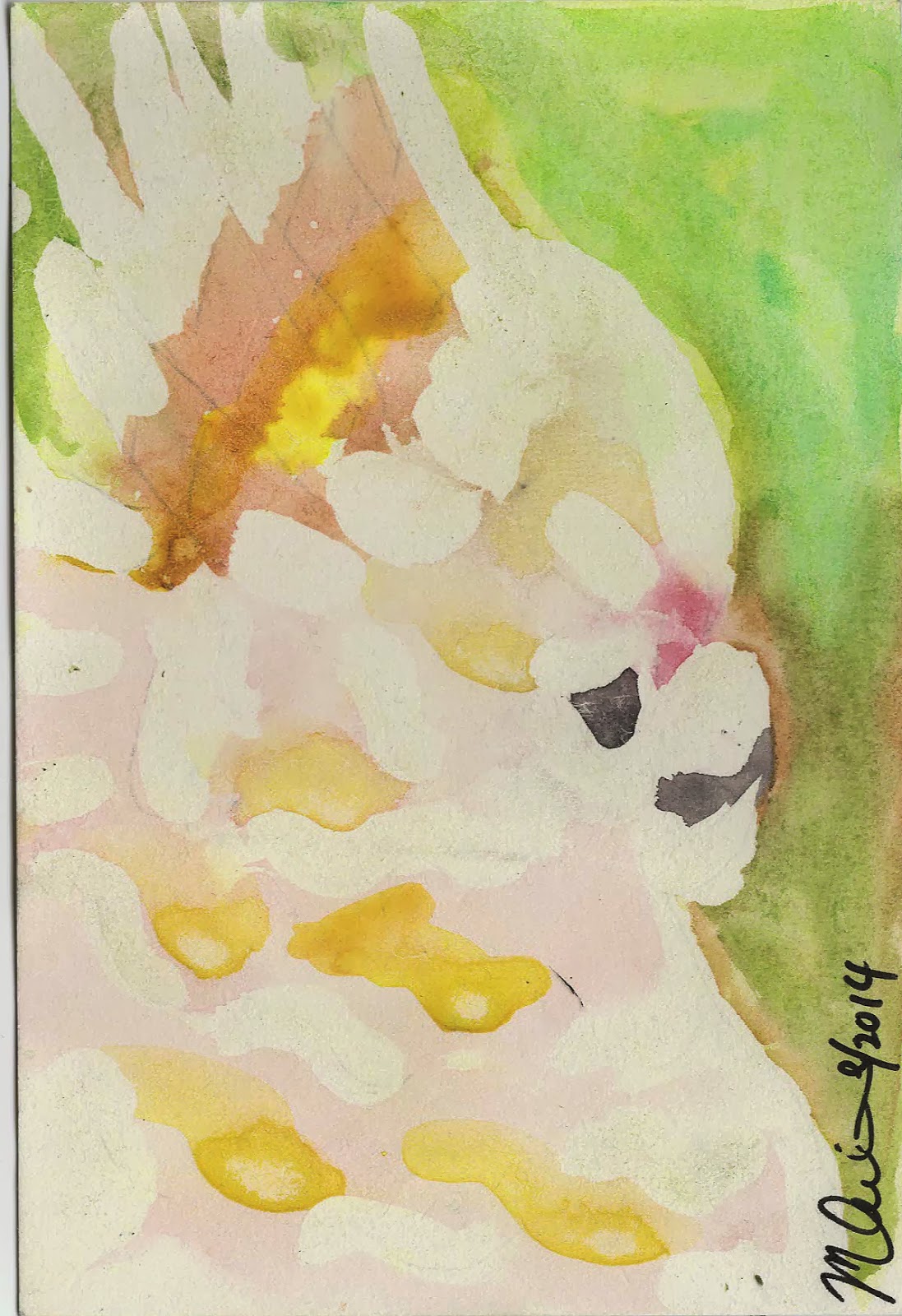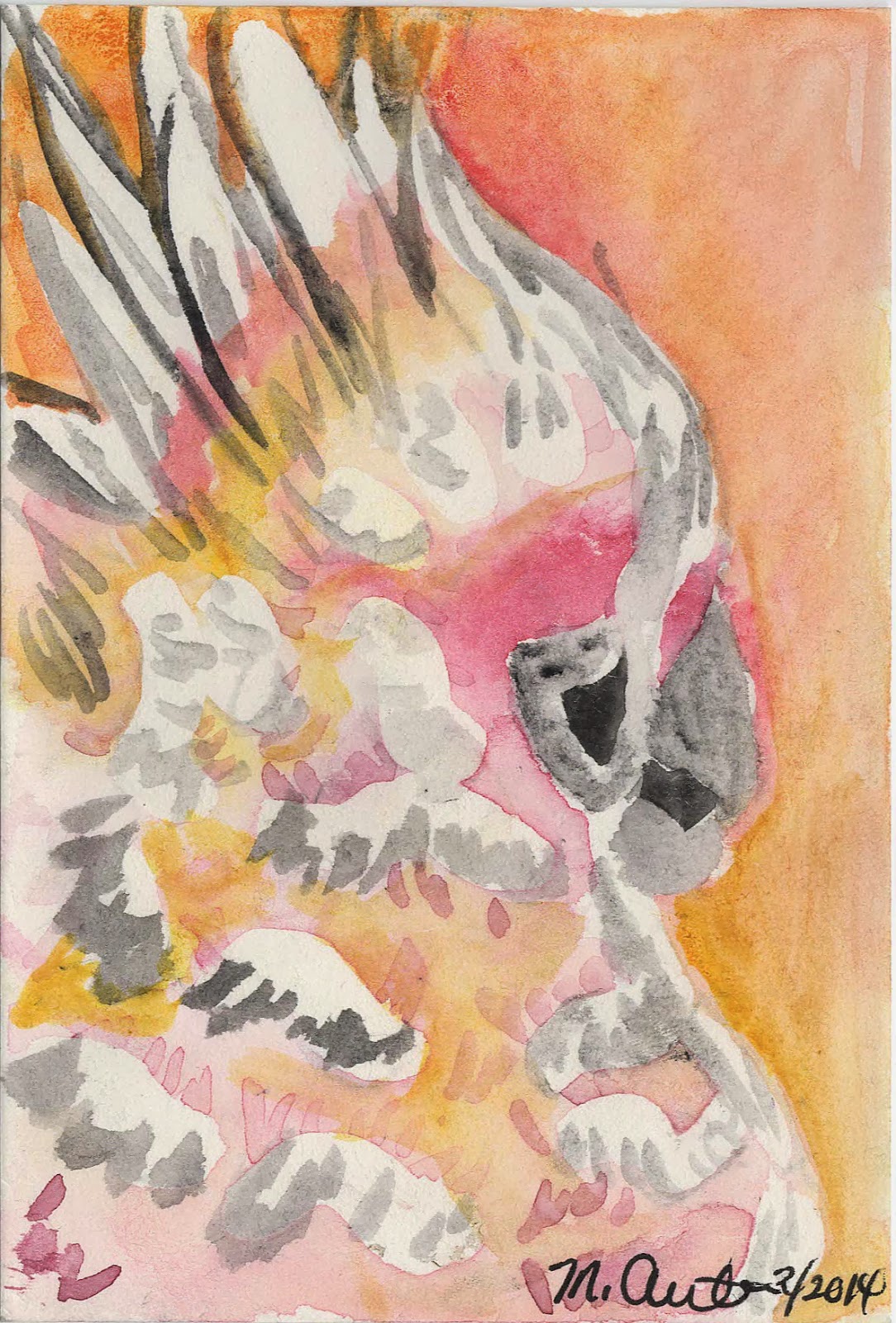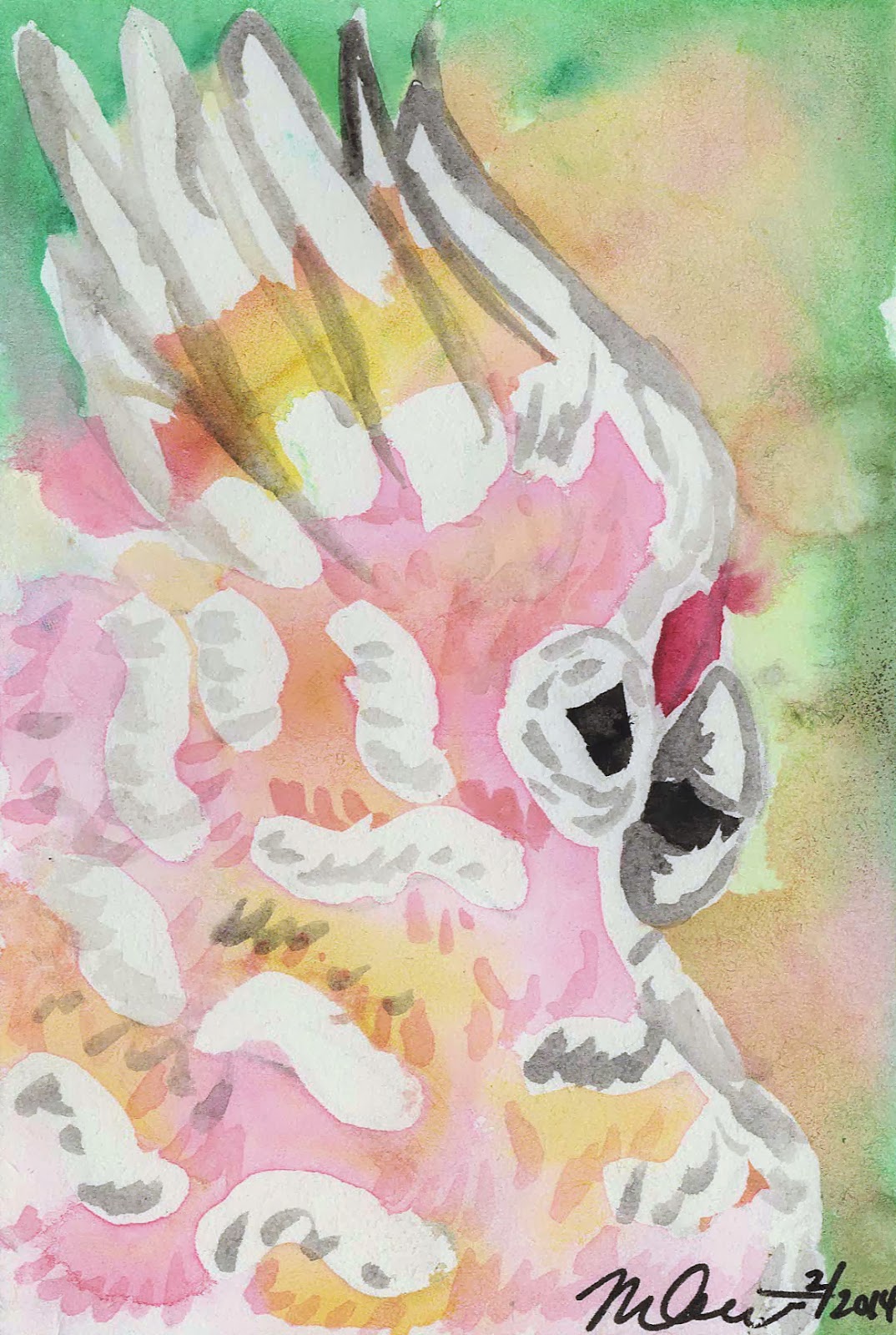Experiments and Uses for Masking Fluid in Watercolor
Painting Major Mitchell's Cockatoos
What I learned:
-Apply masking fluid where you want there to remain a clean crisp white line
-Make sure your masking fluid dries all the way, as well as the paint and paper around it, which can affect its removal
-Once you have a little ball of masking fluid, you can use this to help pull off easily and cleanly other remaining masking fluid, it's highly attracted to itself
-the lines will be harsh, so plan for how you want to soften them if you would like
-Using self mixed greys, browns, and neutrals on your pallette is probably better than shading with black except for areas which are truly perceivable as black
 |
| This is a Naked One |
 |
I used the same self-made template and added some black shadowing,
though if I do this again I will probably try to mix a warmer pink-grey to use for the shading instead. |
 |
Black added over the masking fluid white. All the white areas
remained white thanks to masking fluid. I like the crisp clean lines they give,
though they can be jarrinh |
Stay tuned and there may be a tutorial on how to make a bird like this (and maybe with a template for you to trace.) I'm not sure about the aesthetics but I certainly enjoyed this painting exercise.





























